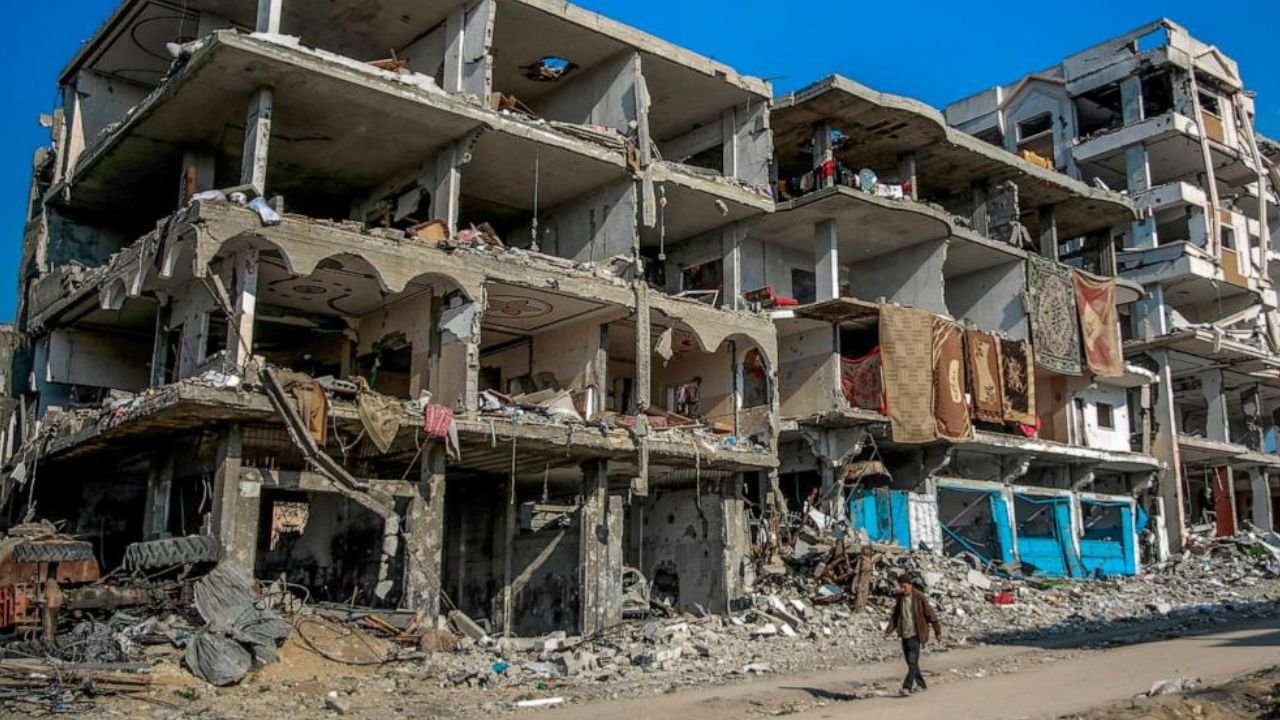Palestinian Territories – Israel has “more or less accepted” a proposal for a ceasefire in its attacks in the Gaza Strip, a US official said Saturday as Palestinian negotiators were expected in Cairo.
Mediators have been scrambling to lock in a truce before Ramadan, the Muslim fasting month which begins on March 10 or 11, eyeing an end to the almost five-month conflict that has ravaged Gaza.
In a sign of the dire humanitarian conditions as violence rages on, the besieged territory’s health ministry reported more than a dozen child malnutrition deaths in recent days.
The US official told reporters on condition of anonymity that “there’s a framework deal” for a ceasefire which “the Israelis have more or less accepted”.
“Right now, the ball is in the camp of Hamas,” the official said.
A source close to Hamas told AFP a delegation from the group was headed from Qatar to Egypt on Saturday.
Israel has yet to confirm that it has accepted the truce plan.
Speaking on condition of anonymity, the source said that Hamas would deliver its “official answer” to the plan, which resulted from talks with Israeli negotiators in Paris late last month.
The mediators “will resume negotiations for a Gaza truce in Cairo on Sunday,” Egypt’s AlQahera News reported.
Earlier the United States, which provides ally Israel with billions of dollars in military aid, said it began airdropping aid into war-ravaged Gaza.
The start of the US relief operation came a day after President Joe Biden announced the move and spoke of the “need to do more” to alleviate the dire humanitarian crisis.
But parachuting aid cannot replace “the fundamental need to move assistance through as many land crossings as possible”, the US official said.
‘Unjustifiable’ shooting
Gaza has faced dwindling deliveries of relief supplies across its land borders, which aid groups blame at least in part on Israeli restrictions.
US Central Command, in a post on social media platform X, said the air operation was conducted jointly with Jordan and saw planes drop “over 38,000 meals along the coastline of Gaza allowing for civilian access to the critical aid”.
Several Arab and European governments have carried out air drops over Gaza since November but Tuesday’s operation was the first involving the United States.
At least 13 children have died from “malnutrition and dehydration”, the Gaza health ministry said Saturday, two days after a desperate rush for aid from a convoy of trucks in Gaza City ended in the deaths of dozens of Palestinians.
The health ministry said Israeli forces shot civilians but the Israeli army insisted most died in a stampede or crush.
A United Nations team that visited Gaza City’s Al-Shifa Hospital reported seeing “a large number” of gunshot wounds among Palestinians in the aftermath of the aid truck storming.
Hossam Abu Safiya, director of the city’s Kamal Adwan Hospital, said all the casualties it admitted were hit by “bullets and shrapnel from occupation forces”.
The European Union’s foreign policy chief Josep Borrell joined calls for an “impartial international investigation” into the “tragic event” early Thursday.
The shooting “against civilians trying to access foodstuff is unjustifiable”, he said.
The health ministry said 116 people were killed and more than 750 wounded in the chaotic scenes, which drew widespread international condemnation.
The aid convoy deaths helped push the number of Palestinian war dead in Gaza to 30,320, mostly women and children, according to Gaza’s health ministry.
‘Destruction is everywhere’
Jens Laerke, spokesman for the UN humanitarian office OCHA, said on Friday that “a famine is almost inevitable”.
Laerke cited the near-total closure of commercial food imports, the “trickle of trucks” coming in with food aid, and the “massive access constraints” to moving around inside Gaza.
The International Rescue Committee said the very fact airdrops were “being considered is testament to the serious access challenges”.
The group said parachuting aid mostly distracts “time and effort from proven solutions to help at scale”.
AFPTV images showed people running and pedalling fast on bicycles past bomb-damaged buildings on a rutted dirt road to reach aid floating down to Gaza City.
Hisham Abu Eid, 28, of Gaza City’s Zeitun area, said he got two bags of flour from an aid distribution and gave one to his neighbours.
“Aid that is getting into Gaza is rare and not enough for even a small number of people. Famine is killing people,” Abu Eid said.
As mediators seek a deal that may include more aid into Gaza and the release of hostages, Israeli Prime Minister Benjamin Netanyahu has come under increasing domestic pressure over the fate of the remaining captives.
Israelis protesters reached Jerusalem on Saturday, capping a four-day march from the Gaza border to pressure the government to secure the hostages’ release.
The US official said a six-week ceasefire was on the table, “starting today if Hamas agrees to release the defined category of vulnerable hostages… the sick, the wounded, elderly and women”.
In Rafah, where hundreds of thousands of Gazans displaced by the war have sought refuge, Israeli bombardment that hit a makeshift camp killed at least 11 people, the Gaza health ministry said.
The strike near a hospital also left “about 50 injured, including children”, it added.
The Israeli military said it was looking into the incident.
An AFP journalist saw wounded people being rushed on stretchers to another Rafah hospital.
“Destruction is everywhere and there are many martyrs,” said resident Belal Abu Jekhleh.
burs-ami/kir
© Agence France-Presse







